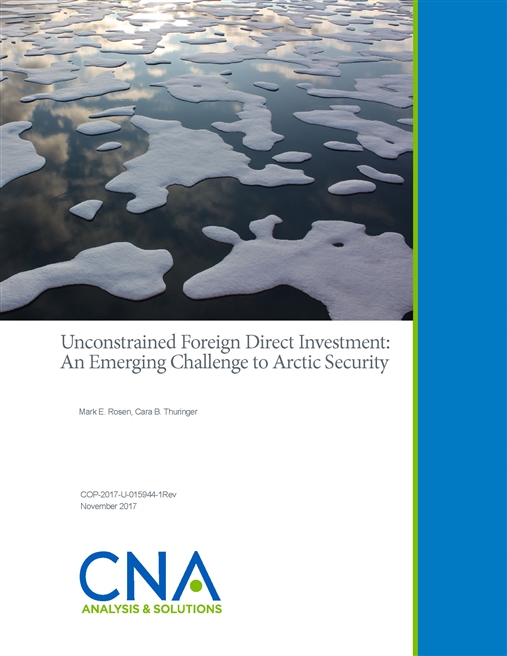The Arctic Ocean is a vast maritime region which is bordered by six states that are now coming to appreciate their enormous hydrocarbon, mineral, and other natural resource potentials. Other states outside of the Arctic have also taken note of the Arctic’s vast and unexploited deposits, especially China. The Arctic is essentially a closed-sea and all human activity, even environmental accidents on land, can have serious environmental impacts on the other littoral countries because of ocean currents and climactic conditions. This fact is compounded by the aggressive pace of climate change in the Arctic. The changes in the Arctic environment due to climate change are accelerating the rate at which these resources are becoming accessible for exploitation and by ship as the ice recedes.
Exploitation of these resources carries the risk of oil spills, ship casualties, chemical runoff from mining and smelting activities, and more. The Arctic littoral states are not equal in terms of their ability to appreciate these risks and mitigate them. It is in the interests of all of the Arctic states, indeed the world as a whole, to develop regional cooperative mechanisms to ensure that development takes place using state of the art technology, with suitable infrastructure in place, and substantially enhanced disaster response capabilities.
The opportunities of rapid development also carry socio-economic risks to countries that are less economically resilient, such as Greenland, Iceland, Russia and, perhaps tribal regions. Special care needs to be taken to ensure that development takes place in a responsible manner and ensures that the states or regions that are the recipients of foreign direct investment (FDI) are capable of monitoring it, regulating the underlying activity, and enacting safeguards if a project goes bankrupt and the foreign owners cannot be held financially responsible. Care must also be taken to safeguard the rights of indigenous populations to ensure that they are not displaced from their lands because of resource degradation or social conditions.
The report takes stock of the current FDI patterns — at the transactional level — with a particular focus on Chinese activity as a case study. This case study explores China’s natural resource strategy and its past FDI activities in South America and Africa.
This study also makes detailed comparisons of the FDI laws of the six main states that border the Arctic Ocean. This study is limited to the littoral states of the Arctic Ocean because those six states would, under the current legal system, have to bear the brunt of any type of industrial accident.
Based on the findings of the transactional and legal review of FDI in the Arctic, the authors suggest three approaches that could be pursued independently or in tandem, to monitor and indirectly regulate inbound FDI. Those approaches include establishing a set of multilateral Arctic FDI review criteria administered by each nation; an Arctic Development Code; and the formation and funding of an Arctic Development Bank. The Arctic Development Bank would provide private developers with access to local capital (vs. Beijing sourced) to finance infrastructure and resource extraction projects. These three approaches seek to eliminate the potential that one state could, by enacting low standards, stimulate a race to the bottom in terms of the environmental or labor standards associated with resource extraction.
Download reportDISTRIBUTION STATEMENT A. Approved for public release: distribution unlimited.
Details
- Pages: 98
- Document Number: COP-2017-U-015944-1Rev
- Publication Date: 12/8/2017
